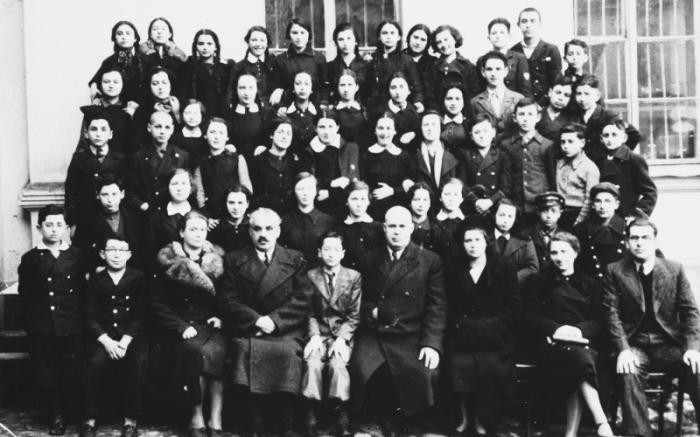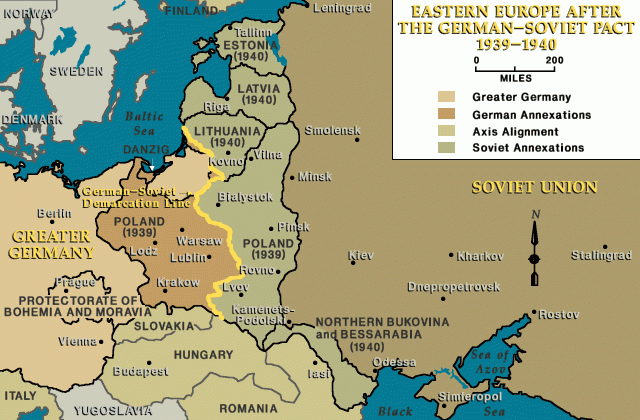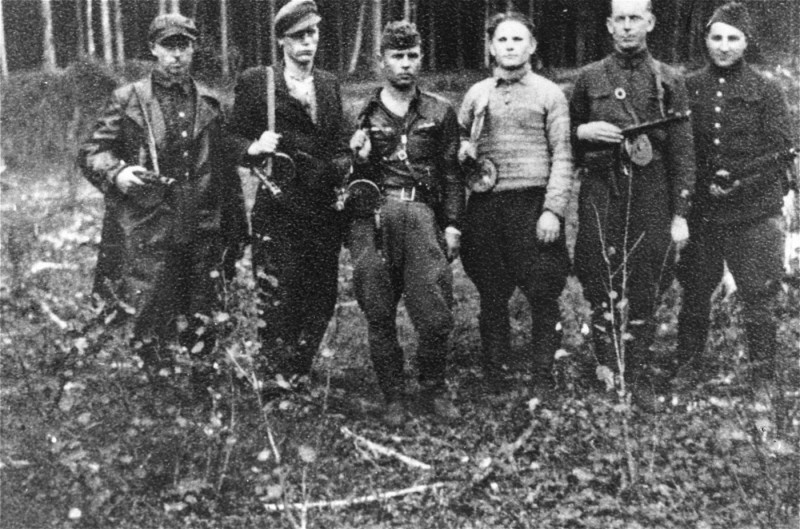
Vilna
During the Holocaust, the creation of ghettos was a key step in the Nazi process of brutally separating, persecuting, and ultimately destroying Europe's Jews. Ghettos isolated Jews from the non-Jewish population and from other Jewish communities. Living conditions were miserable. Among them was the Vilna ghetto.
Background
Poland and Lithuania both claimed Vilna (Vilnius) after World War I. Polish forces occupied Vilna in 1920, and before the outbreak of World War II, the city of Vilna was part of northeastern Poland.

Under the terms of the German-Soviet Pact, Vilna, along with the rest of eastern Poland, was occupied by Soviet forces in late September 1939. In October 1939, the Soviet Union transferred the Vilna region to Lithuania. The population of the city was 200,000 at this time, including over 55,000 Jews. In addition, some 12,000-15,000 Jewish refugees from German-occupied Poland found refuge in the city. Soviet forces occupied Lithuania in June 1940 and in August 1940 incorporated Vilna, along with the rest of Lithuania, into the Soviet Union. On June 22, 1941, Germany attacked Soviet forces in eastern Europe. The German army occupied Vilna on June 24, 1941, the third day after the invasion.
Vilna Ghetto
In July 1941, the German military administration issued a series of anti-Jewish decrees. During the same month, German Einsatzgruppen (mobile killing squads) aided by Lithuanian auxiliaries killed 5,000 Jewish men at Ponary forest, eight miles outside Vilna. A German civilian administration took control of Vilna in August 1941. At the end of the month, Germans killed another 3,500 Jews at Ponary.
The Germans established two ghettos—ghetto # 1 and ghetto # 2—in Vilna in early September 1941. Jews considered incapable of work were concentrated in ghetto # 2. In October 1941, German Einsatzgruppe detachments and Lithuanian auxiliaries destroyed ghetto # 2, killing the ghetto population in Ponary. Lukiszki Prison served as a collection center for Jews who were to be taken to Ponary and shot. By the end of 1941, the Einsatzgruppen had killed about 40,000 Jews in Ponary.
The Jews in ghetto # 1 were forced to work in factories or in construction projects outside the ghetto. Some Jews were sent to labor camps in the Vilna region. In periodic killing operations, most of the ghetto's inhabitants were massacred at Ponary. From the spring of 1942 until the spring of 1943, there were no mass killing operations in Vilna. The Germans renewed the killings during the final liquidation of ghetto # 1 in late September 1943. Children, the elderly, and the sick were sent to the Sobibor killing center or were shot at Ponary. The surviving men were sent to labor camps in Estonia, while the women were sent to labor camps in Latvia.
Resistance in the Vilna Ghetto

The Vilna ghetto had a significant Jewish resistance movement. A group of Jewish partisans known as the United Partisan Organization (Fareynegte Partizaner Organizatsye; FPO) was formed in 1942 and operated within the ghetto. The resistance created hiding places for weapons and prepared to fight the Germans. In early September 1943, realizing that the Germans intended the final destruction of the ghetto, resistance members skirmished with the Germans, who had entered the ghetto to begin the deportations. The Jewish council, however, agreed to cooperate in the deportations of Jews from the ghetto, hoping to minimize bloodshed. Consequently, the FPO decided to flee to the nearby forests to fight the Germans. Some ghetto fighters escaped the final destruction of the ghetto, leaving through the sewers to join partisans in the Rudninkai and Naroch forests outside the city.
In September 1943, in an attempt to destroy the evidence of the killing of Jews at Ponary, the Germans forced detachments of Jewish laborers to open the mass graves and burn the corpses. Jews from nearby labor camps continued to be killed at Ponary.
During the German occupation, tens of thousands of Jews from Vilna and the surrounding area, as well as Soviet prisoners of war and others suspected of opposing the Germans, were massacred at Ponary. Soviet forces liberated Vilna in July 1944.
Critical Thinking Questions
- Learn about the lives of the Jews in the community of Vilna before 1939.
- How does the example of this ghetto demonstrate the complexity and the systematic nature of the German efforts to abuse and kill the Jews?
- Examine the realities and choices faced by Jewish council members in the ghettos.
- In what ways did Jews resist while forced to live in the ghettos, including Vilna?
- How can societies, communities, and individuals reinforce and strengthen the willingness to stand up for others?

